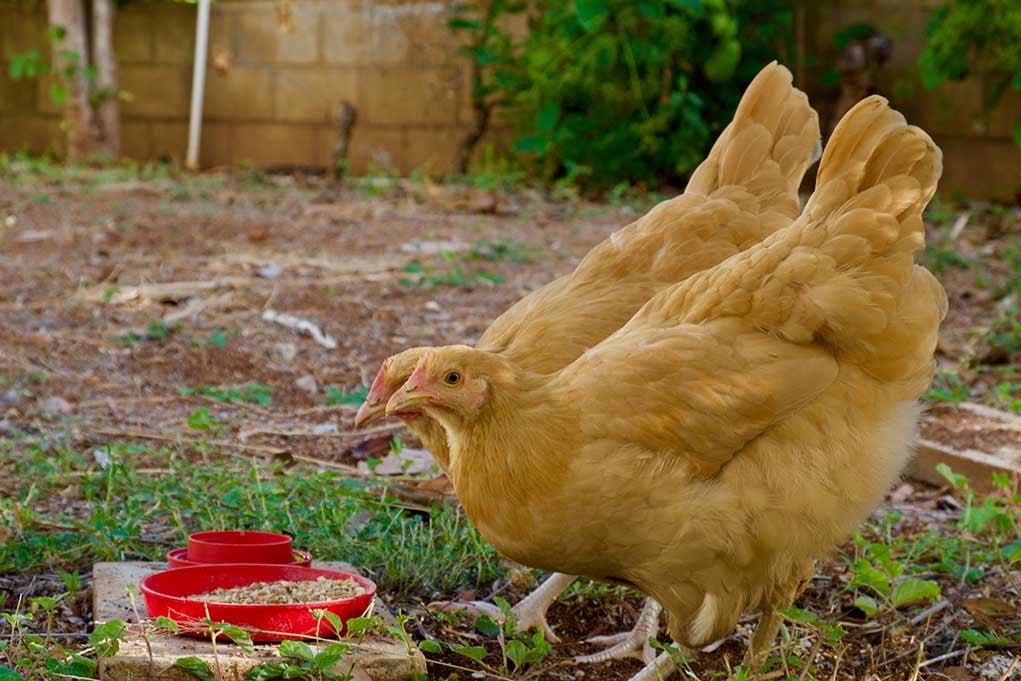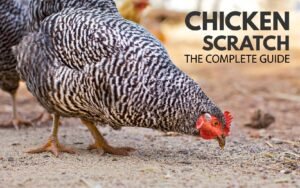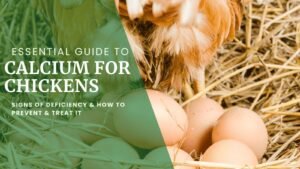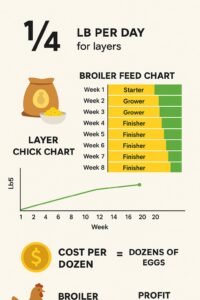Every chicken keeper has been there. You’re standing in the feed store, surrounded by sacks of chicken feed, and you spot two bags that look similar but have different names: one for grit and one for oyster shells. You’ve heard that chickens need both, but you’re completely confused. Do they serve the same purpose? What’s the difference? And what happens if you get it wrong?
This guide will clear up all the confusion. We’ll explain exactly what each one does, when to use them, and why. By the end, you’ll be able to confidently answer this question for yourself. And to make it stick, let’s start with a simple analogy: Grit is their teeth, and Oyster Shell is their calcium supplement.
The Essential Difference: Grit vs. Oyster Shell
This is the most important part of the entire topic. While both are sold as supplements, they perform completely different jobs inside your chicken. One is for mechanical digestion and the other is for nutrition.
Grit (Insoluble): The “Teeth”
Since chickens have no teeth, they swallow tiny, hard stones and pebbles, which are stored in a muscular organ called the gizzard. The gizzard’s powerful muscles use these stones to grind up tough foods like seeds, corn, and grass. As explained by the University of Kentucky Extension, this is purely a mechanical process for digestion. The grit itself is insoluble, meaning it doesn’t dissolve in the chicken’s system, and it stays in the gizzard until it becomes too small to be useful. Insoluble grit is typically made of crushed granite or flint.
Oyster Shell (Soluble): The “Calcium Supplement”
This is a pure source of calcium. An oyster shell is a soluble supplement, meaning it dissolves in the chicken’s digestive system. The hen absorbs this calcium and uses it to create a hard, strong eggshell. Think of it as a calcium tablet for your chicken. It is purely for nutrition.
The simple fact is that chickens need both, and they perform two separate and equally important jobs.
Comparison Table: Grit vs. Oyster Shell at a Glance
| Feature | Chicken Grit (Insoluble) | Oyster Shell (Soluble) |
|---|---|---|
| Purpose | Mechanical Digestion (Grinding Food) | Nutritional Supplement (Calcium) |
| Analogy | Teeth | Calcium Pill / Tums |
| Made Of | Crushed granite, flint, or small pebbles | Crushed oyster shells, limestone grit |
| Who Needs It? | All chickens eating anything other than a fine mash/crumbles. | Laying hens and pullets about to lay. |
| How it Works | Stays in the gizzard to grind food. | Dissolves and is absorbed by the body. |
A Deep Dive into Chicken Grit (The “Teeth”)
Let’s take a closer look at the digestive role of grit.
How Can You Tell if a Chicken Needs Grit?
The most reliable way to tell if a chicken needs grit is by looking at its diet. Any chicken that eats anything other than a finely ground commercial pellet or crumble needs grit. If they are eating grass, seeds, kitchen scraps, or even a standard commercial feed, their gizzard requires grit to grind it down. Without it, they can develop an impacted crop, which is a potentially life-threatening blockage of undigested food.
What Happens if Chickens Don’t Have Grit?
Without grit, a chicken cannot effectively break down and digest its food. This can lead to nutritional deficiencies as they are unable to absorb the full nutrients from their diet. In severe cases, a lack of grit can cause a blockage of undigested food in the crop, known as an impacted crop, which requires immediate intervention.
Do Free-Range Chickens or Chickens on Sand Need Grit?
Yes, they still need it. While free-range chickens may find some natural grit on their own, you cannot be sure they are finding the right size or amount. It is always best to offer a separate, free-choice container to ensure they have enough. Similarly, sand is often too fine to be an effective replacement for true grit and can even cause impaction if consumed in large quantities.
A Deep Dive into Oyster Shells (The “Calcium Supplement”)
Here’s everything you need to know about providing calcium for your hens.
What Are the Signs of Calcium Deficiency?
The primary signs are related to eggshell quality. Soft shells, thin shells, and eggs with a gritty or bumpy texture are all classic symptoms. In more severe cases, a hen may become egg-bound, a life-threatening condition where the egg gets stuck. VCA Animal Hospitals notes that without adequate calcium, the hen’s body will pull calcium from her bones, leading to weak, brittle bones and lameness.
How to Feed Oyster Shells to Chickens
The best way to feed oyster shells to chickens is by offering it free-choice in a separate feeder, allowing laying hens to consume it as their bodies require extra calcium. Never mix it into their feed. If you mix it into their main layer feed, you will force roosters and non-laying hens to consume it, which can cause health issues.
What Are Good Alternatives to Oyster Shells?
The best alternative to commercial oyster shells is crushed, sterilized eggshells. These must be thoroughly washed, baked to kill any bacteria, and then crushed into small, recognizable pieces. This is a critical step to prevent your hens from developing the bad habit of eating their own eggs. Some keepers also use fine limestone grit as a calcium source.
Can Chickens Eat Too Much Calcium?
Yes, they can. While it’s important for laying hens to get enough calcium, too much can be just as dangerous, especially for roosters and young birds. Excess dietary calcium can interfere with the calcium absorption of other vital nutrients, leading to deficiencies and potential kidney damage.
Common Questions for the Whole Flock
These questions apply to all chickens, regardless of their laying status.
Do Chickens Need BOTH Grit and Oyster Shell?
Yes, absolutely. A laying hen needs both. They are not interchangeable. Grit is for digestion and is needed by all chickens eating anything other than a fine mash, while oyster shells are a nutritional supplement needed only by laying hens. Remember the analogy: Grit is their teeth, and Oyster Shell is their calcium supplement.
Do Roosters Need Grit or Oyster Shells?
Yes, roosters need grit, but they do not need oyster shells. Since roosters do not lay eggs, they don’t have the same high calcium requirements as laying hens. Consuming a high-calcium layer feed can lead to serious health problems like kidney damage or gout. Always provide roosters with their own low-calcium feed and offer both grit and oyster shells free-choice in separate containers so the hens can choose what they need.
Are Oyster Shells the Same as “Shell Grit”?
No, they are not. This is a common point of confusion. “Shell grit” is a term often used for a calcium source (like crushed shells or limestone grit). It is not the same as the insoluble grit (like granite) needed for digestion.
Final Thought
Don’t let the terms “grit” and “oyster shell” confuse you. Just remember the core analogy: Grit is their teeth, and Oyster Shell is their calcium supplement. For a healthy, productive flock, keep two separate containers with these supplements available at all times.
Providing these two simple, inexpensive supplements is one of the most important things you can do to ensure your chickens have a long, healthy life and lay beautiful, strong-shelled eggs. It’s a cornerstone of responsible animal husbandry that every chicken keeper should master.

Oladepo Babatunde is the founder of ChickenStarter.com. He is a backyard chicken keeper and educator who specializes in helping beginners raise healthy flocks, particularly in warm climates. His expertise comes from years of hands-on experience building coops, treating common chicken ailments, and solving flock management issues. His own happy hens are a testament to his methods, laying 25-30 eggs weekly.



